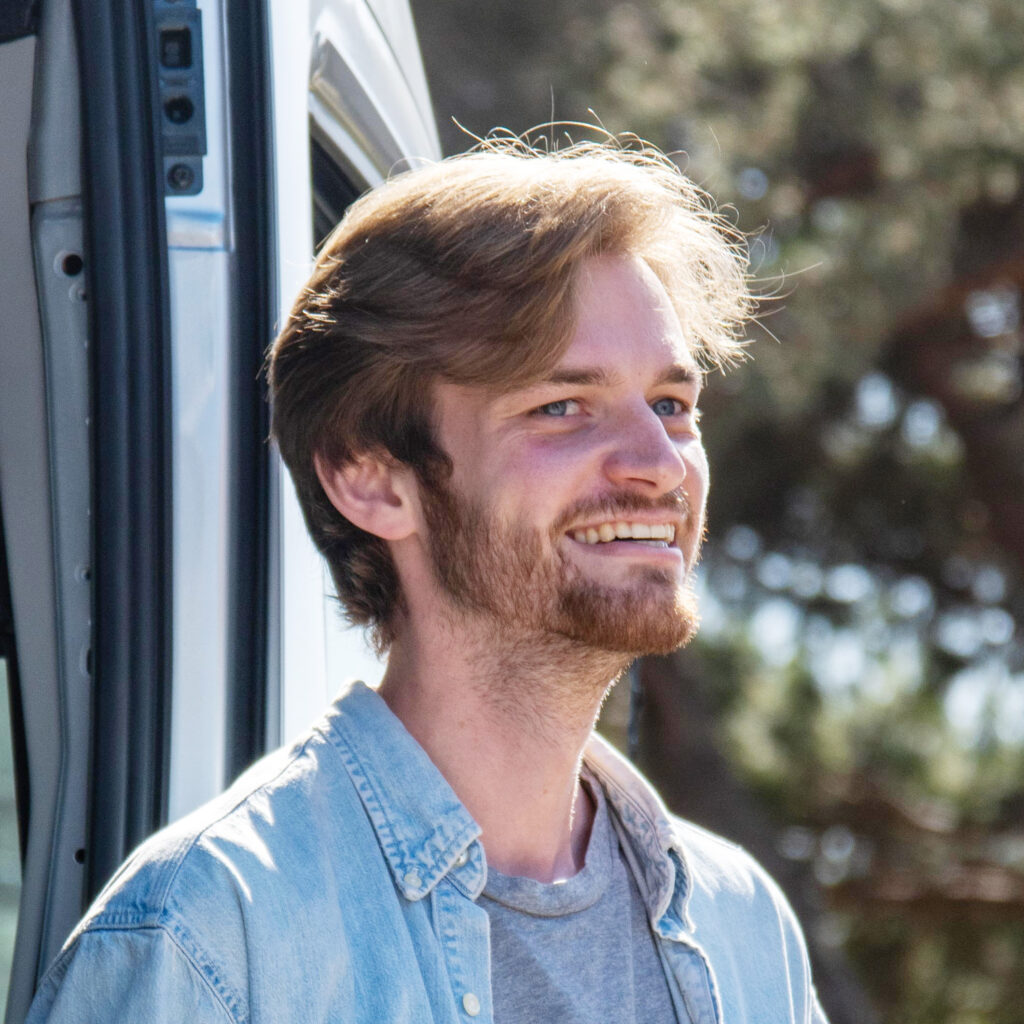
Chris Lamb
Chris is a PhD student primarily acting as a resource for other undergraduate researchers involved with DoseNet and RadWatch or helps with public education at outreach events .
Education:
- 2020 B.S., Nuclear Engineering, University of California – Berkeley
About:
Chris Lamb is a Nuclear Engineering PhD student in Professor Kai Vetter’s research group. His primary interests are radiation detection and imaging and their applications to environmental research. His current research involves designing, operating, and optimizing coded aperture imaging systems. Primarily his work focuses on using a Cylindrical Active Mask Imaging System (CAMIS) that he previously designed and installed within an electric van to drive around the Bay Area. Using this system, imaging and localization of gamma-ray sources 100-200m away is possible. Combining this radiological imager with an Ion-Mobility Spectrometer allows for a unique opportunity for co-located normalcy mapping of radiological and chemical data to allow for improved anomaly detection. This system will be further enhanced through the inclusion of contextual sensors (LiDAR, visual imagery, meteorological data, and hyperspectral imaging). He is also in the process of designing a novel semi-modular coded aperture mask to be used in near-field imaging of small animals. This will allow for the swapping of mask designs at different magnifications without the need for re-manufacturing a new mask. In his free time, he likes to take pictures of nebulae as an amateur astrophotographer, play card or video games, and hike or bike around the Bay Area.
Previous Work:
Previously, he designed and built the Cylindrical Active Coded Aperture Detection System (CAMIS) using ~128 NaI detectors for mobile deployment allowing for imaging and mapping of radiation. The cylindrical pattern allows for masking the detectors on one side of the system by using the detectors on the other side as a shadowing mask. This design has a 360-degree FOV and a square-meter detection area in all directions enabling high-sensitivity detection of radioactive sources without compromising signal loss through attenuation masks used in typical coded-aperture imaging.
In the past, his work for DoseNet primarily involved software creation for the operation of the sensors (Si radiation counter, D3S CsI hand-held radiation spectrometer, and CO2/Air Quality/Weather) used on the devices installed in remote locations. He also designed the current implementation of the outdoor system layout, including the PCB design for the Raspberry Pi and the sensor mounting apparatus (laser-cut wood mounting plates). For RadWatch he helped with collecting and preparing fish samples for Gamma/NA Analysis, along with teaching the newer members about radiation detection equipment and analysis techniques.
In the Fall of 2022, he was one of two Graduate Student Instructors for Nuclear Engineering 104, Radiation Detection and Nuclear Instrumentation Laboratory. Then in the Spring of 2024, he acted as the lead Graduate Student Instructor for the course. For the Fall 2019 and the Fall 2020 semesters, he was the TA for Dr. Hanks’s Engineering 11, A Hands-on Introduction to Radiation Detection: Getting to Know Our Radioactive World. He was also one of the Knitting DeCal facilitators from Fall 2017 to Spring 2020.
